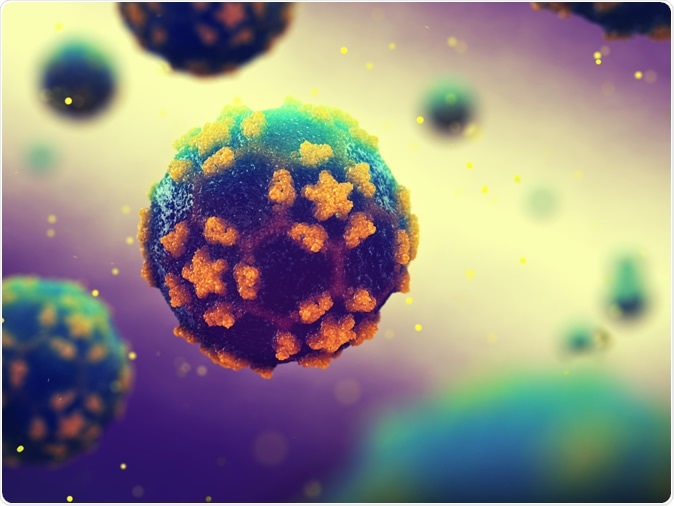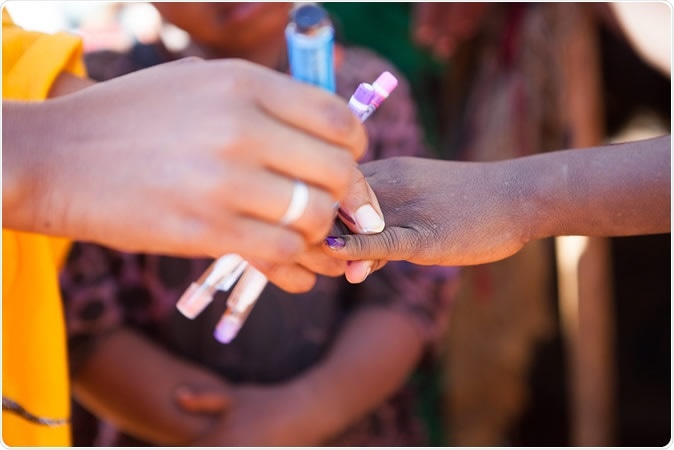The eradication of polio or poliomyelitis has been a success story for many countries across the globe, including the Philippines. For nearly two decades, the World Health Organization (WHO) and the country’s Department of Health (DOH) declared the nation polio-free, thanks to immunization programs and efforts.

Polio/Poliomyelitis, an infectious disease caused by the poliovirus, 3d illustration Credit: nobeastsofierce / Shutterstock
In a grim turn of events, the 19-year-long polio-free status has come to an end. Philippine health officials declared the re-emergence of the first polio case in a 3-year-old girl in Lanao del Sur, a southern province in the Bangsamoro Autonomous Region in Muslim Mindanao.
The three-year-old girl is the first confirmed case of Type 2 polio in the country. The girl is now well at home, but with residual paralysis, the DOH confirmed.
“A single confirmed polio case of vaccine-derived poliovirus type 2 or two positive environmental samples that are genetically linked isolated in two different locations is considered an epidemic in a polio-free country,” Dr. Duque said.
Dr. Francisco Duque II, Health Secretary of the Department of Health (DOH) said that authorities had confirmed the case of polio and they also detected the poliovirus in samples from sewage in Manila and waterways in Davao, a province south of the Philippines.
The US Centers for Disease Control and Prevention (CDC) and the Japan National Institute for Infectious Diseases had verified the samples sent by the country, thus, confirming the presence of the virus in the said locations.
WHO and UNICEF expresses concern over the reemergence of the virus
The World Health Organization (WHO) and the United Nations Children's Fund (UNICEF) expresses deep concern for the country, where the last polio case was reported in 1993, driving the health agencies to declare the country polio-free in 2000.
“We are very concerned that polioviruses are now circulating in Manila, Davao, and Lanao del Sur,” said Dr. Rabindra Abeyasinghe, World Health Organization (WHO) Representative in the Philippines, said in a statement.
“WHO and UNICEF are working closely with the Department of Health to strengthen surveillance and swiftly respond to this outbreak. We urge all parents and caregivers of children under 5 years of age to have them vaccinated so that they are protected against polio for life,” she added.
The UNICEF Philippines representative, Oyun Dendevnorov, said that the agency is working with WHO and DOH to accelerate response to curb the spread of the viral infection.
“The outbreak calls for urgent action to protect more children from being infected. It reminds us of the importance of increasing immunization coverage to 95% of children to stop poliovirus transmission in the Philippines. Vaccination is the only and best protection against polio that mainly affects children under 5 years of age,” she explained.
What the Philippine health officials are doing
Before the declaration of the outbreak, the DOH and some of its partners had launched a polio immunization campaign in Manila. However, there is a need to accelerate efforts to conduct a mass immunization against polio as soon as possible.
In October, the DOH plans to conduct a rapid response to the outbreak through a national mass polio immunization campaign for all children below 5 years old. Health officials urge parents and health workers to participate in the campaign, which is said to be the only way to stem the outbreak and protect the children against the paralyzing illness.
What is poliomyelitis?
Poliomyelitis or polio is a high infection, crippling, and potentially fatal disease that affects children, causing paralysis. In fact, the virus targets the nervous system and in worse cases leads to total paralysis in a matter of hours. The virus can be spread through the fecal-oral route. The most common vehicle is contaminated food or water.
The symptoms of the disease include fatigue, fever, vomiting, headache, stiffness of the neck, and limb pain. In about one in 200 infections, irreversible paralysis may occur, usually affecting the legs. In patients with paralysis, an estimated 5 to 10 percent die when their breathing muscles become stiff and immobilized.
There is no cure for polio, but it is preventable. Immunization and good hygiene practices are key strategies to battle the disease. A child can be protected against the virus for life if given with polio vaccine multiple times.
The oral polio vaccine
The oral polio vaccine is an important vaccine given in children in the Philippines before the first year of life. The national polio vaccination coverage is from 66 to 68 percent, which is way lower than the national target of 95 percent.

"A child gets a mark after polio vaccination" by UNICEF is licensed under CC BY-NC-ND 2.0
The reemergence of the infection may have stemmed from the decreased overall public trust in immunization, due to the highly politicized response to the reported side effects and risks posed by one of the vaccines introduced in the country, the Dengvaxia, which was formulated to fight Dengue fever.
The oral polio vaccine (OPV) is a safe and effective vaccine against polio, and up to date, it has saved millions of lives. The WHO reports that over 18 million people regained the ability to walk, who could otherwise have been paralyzed, thanks to the polio vaccine. Moreover, over 1.5 million childhood deaths were prevented. Since the vaccine was introduced in 1988, the overall number of cases decreased by over 99 percent.